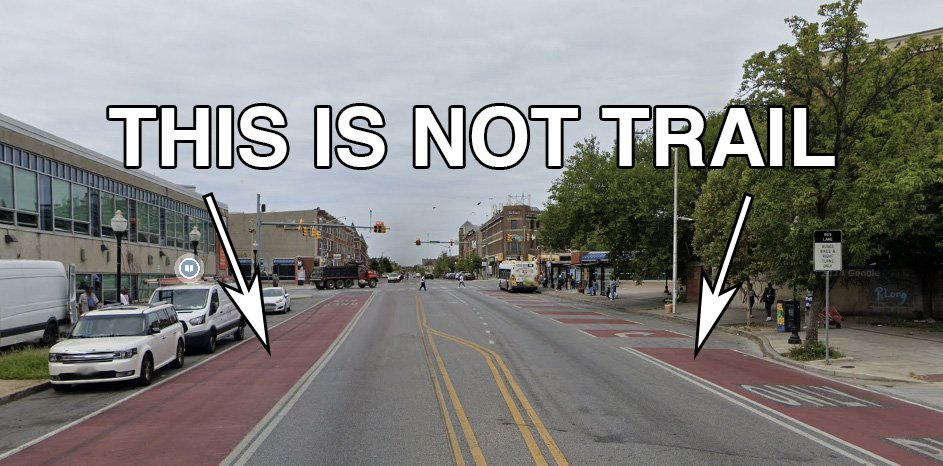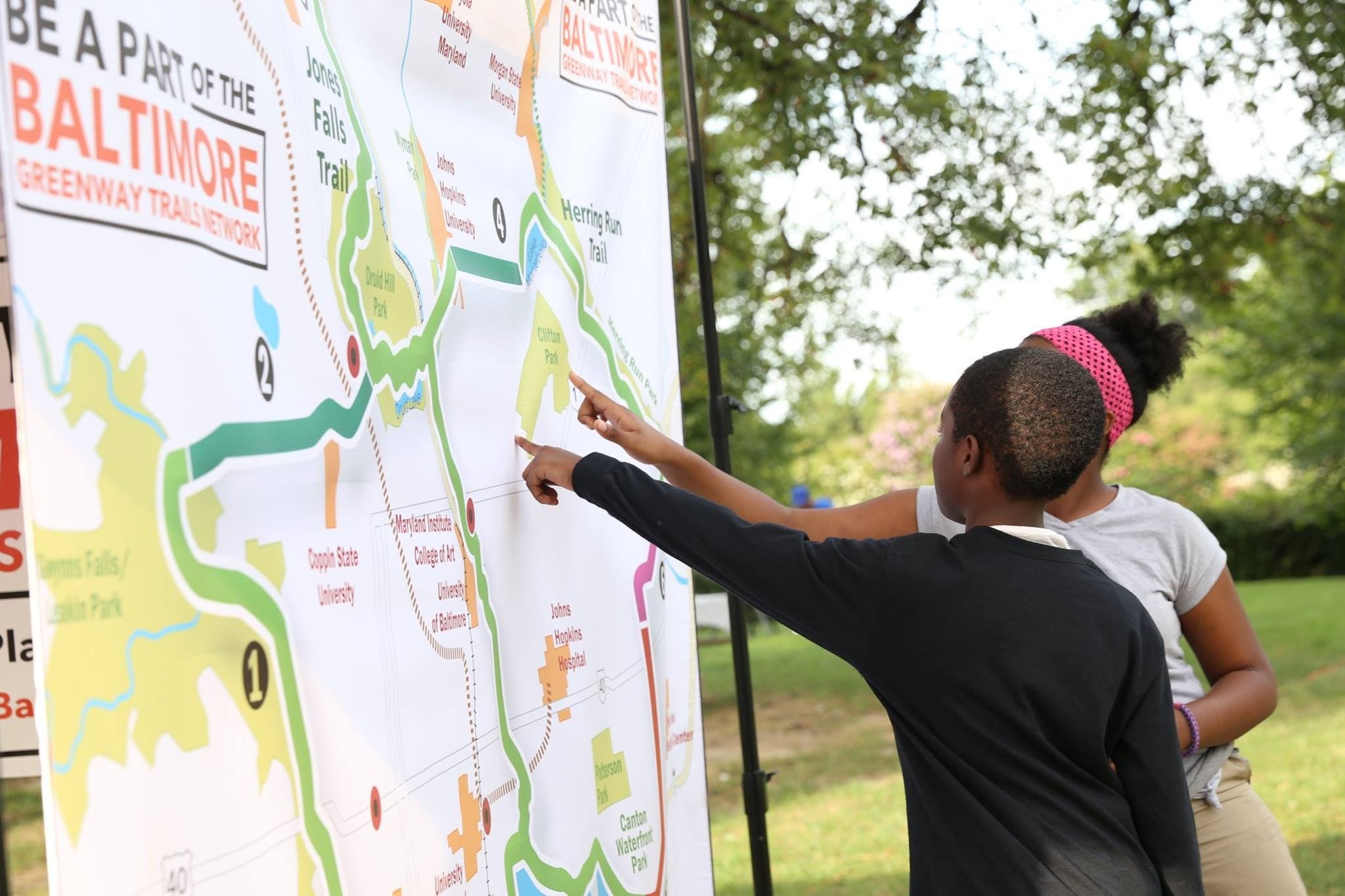Background
Today the City plans to move forward with the removal and modification of a half block of the Monument Street two-way protected bike lane. Between Aisquith and Central Avenue, DOT will remove the portion of the bike lane dedicated for westbound bike traffic and force riders onto the sidewalk located on the north side, adjacent to Dunbar High School’s fields. This $50,000 change is occurring to restore 12 parking spots on the north side of Monument Street.
Bikemore strongly opposes this removal. For the past six months, when it became clear that the City was moving forward with this change, we repeatedly asked for the designs so we could give feedback. These designs were never made available to either Bikemore or the Mayor’s Bicycle Advisory Commission despite the multiple requests. No public meetings were held about this change. We first learned of the design and removal timeline on the same day everyone else did: May 15th. Thirteen days ago, one day short of the required 14 days notice.
This is unacceptable, and puts advocates in a position that forces us to be reactive versus collaborative. It is an act of bad faith, and if we are to move forward as a City that values streets designed for people over cars, we need the Department of Transportation to do better.
This change on Monument Street is problematic for a variety of reasons. But the main ones are that it violates the recently adopted Complete Streets law and further prohibits the City’s ability to be awarded state and federal transportation dollars.
The Complete Street law requires the City:
Comply with State and Federal funding requirements. Alteration and removal of portions of Monument Street go against the state funded and approved design. Maryland Department of Transportation has said enough is enough, and will not continue to provide grants for complete streets infrastructure in Baltimore as long as we continue to remove or alter those facilities for political reasons.
Promote walking, biking, and transit to the greatest extent possible. By forcing bike traffic onto the sidewalk it makes walking and biking on that section of street less safe. It creates conflict between people walking and people biking, and places people biking in a position that makes them less predictable to people driving cars.
Ensure equity by actively pursuing the elimination of health, economic, and access disparities. We know that 33% of the city lacks access to a car, and according to census data over 75% of households lack access to a car along the Monument Street corridor where changes are proposed. Removing infrastructure proven to reduce access disparity and improve health outcomes to install parking is deeply inequitable.
Future State and Federal funding is on the line:
The majority of funding that improves walking, biking, and transit in the City comes from State and Federal money. Given the City’s current budget priorities it is unlikely, at least in the short term, that this situation will change. When the City destroys projects constructed with State funds, it is no wonder the State is now looking to other Maryland communities to support over Baltimore. This money doesn’t only fund bike lanes, it can be used to fund recreation trails, bike parking, traffic calming, and a variety of other infrastructure that improves the safety and quality of life of Baltimore City residents.
By deciding to remove this section of Monument Street, the Mayor is sending a message to residents that short term responses to a handful of people complaining about parking is more important than long term investment in transportation for the entire city.
If they care about improved community outreach, if they care about equitable investment in recreation and transportation across all neighborhoods, they will pause the planned deconstruction and respond to our concerns.
There are solutions available to the parking concerns that don’t cost $50K and threaten future state and federal transportation funding. It is a Mayor’s job to consider the entire city and make decisions that are strategic, not reactive. The decision to remove this portion of the bike lane to restore parking is short sighted. It doesn’t matter who put these decisions in motion or that they began prior to Mayor Young taking office. This is ultimately his decision. We believe there is a way for him to bring folks together on this issue. It starts with asking the Department of Transportation to stop the removal today.





